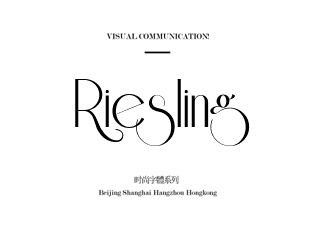您所在的位置:首页 - 艺术 - 正文艺术
英文艺术字体大全图片
![]() 艺娟
2024-05-13
【艺术】
526人已围观
艺娟
2024-05-13
【艺术】
526人已围观
摘要**TheUltimateGuidetoEnglishArtisticFonts**Intherealmoftypography,artisticfontsplayacrucialroleinconv
The Ultimate Guide to English Artistic Fonts
In the realm of typography, artistic fonts play a crucial role in conveying style, mood, and aesthetic appeal. English artistic fonts, in particular, encompass a diverse range of styles, from elegant and ornate to modern and minimalistic. In this comprehensive guide, we'll explore various categories of English artistic fonts, their characteristics, and how they can be effectively utilized in design projects.
1. Serif Fonts:
Serif fonts are characterized by small decorative flourishes, or "serifs," at the end of strokes. These fonts often evoke a sense of tradition, elegance, and sophistication. In English artistic typography, serif fonts are commonly used for formal documents, invitations, and branding materials.
Examples:
Times New Roman: A classic serif font known for its readability and timeless appeal. It's widely used in books, newspapers, and academic publications.
Baskerville: Renowned for its refined appearance and high legibility, Baskerville is often employed in luxury branding and editorial design.
2. SansSerif Fonts:
Sansserif fonts, as the name suggests, lack the decorative serifs found in serif fonts. They are characterized by clean lines and a modern, minimalist aesthetic. In English artistic typography, sansserif fonts are favored for their versatility and contemporary appeal.
Examples:
Helvetica: A ubiquitous sansserif font celebrated for its simplicity and clarity. It's commonly used in signage, branding, and digital interfaces.
Futura: Known for its geometric shapes and sleek design, Futura is a popular choice for modernistic and avantgarde projects.

3. Script Fonts:
Script fonts mimic the fluidity and elegance of handwritten calligraphy. They are characterized by flowing strokes and varying degrees of cursive elements. In English artistic typography, script fonts add a touch of personality and charm to designs, making them ideal for invitations, greeting cards, and decorative text.
Examples:
Edwardian Script: Exuding an air of sophistication and refinement, Edwardian Script is often utilized in wedding invitations and formal announcements.
Brush Script: With its casual and dynamic appearance, Brush Script is wellsuited for playful branding and artistic endeavors.
4. Decorative Fonts:
Decorative fonts encompass a wide range of styles, from ornate and elaborate to whimsical and fantastical. These fonts often serve as attentiongrabbing display typefaces, adding visual interest and personality to headlines, posters, and branding materials.
Examples:
Old English Text: Inspired by medieval calligraphy, Old English Text evokes a sense of history and grandeur. It's commonly used for themed events, such as Renaissance fairs and historical reenactments.
Comic Sans: Despite its controversial reputation, Comic Sans remains a popular choice for informal and lighthearted designs, particularly in children's literature and comic books.
5. Handwritten Fonts:
Handwritten fonts mimic the imperfections and irregularities of natural handwriting. They convey a sense of warmth, authenticity, and personalization, making them ideal for personal projects, such as journals, letters, and DIY crafts.
Examples:
Pacifico: With its casual and friendly demeanor, Pacifico is often used for branding and design projects that require a laidback, approachable vibe.
Amatic SC: Featuring a playful and whimsical style, Amatic SC is wellsuited for children's books, posters, and educational materials.
Tips for Using English Artistic Fonts:
1.
Consider the Context:
Choose fonts that align with the tone, purpose, and audience of your project. A formal document may require a traditional serif font, while a modern website might benefit from a sleek sansserif font.2.
Maintain Readability:
While artistic fonts can enhance visual appeal, prioritize readability to ensure that your message is effectively communicated to your audience. Avoid overly ornate or difficulttoread fonts for body text.3.
Experiment with Pairings:
Mix and match different font styles to create contrast and hierarchy in your designs. Pair a bold display font with a subtle serif or sansserif font for optimal balance and visual interest.4.
Limit Font Choices:
Avoid using too many different fonts in a single design, as this can lead to visual clutter and confusion. Stick to a cohesive font palette consisting of two to three complementary typefaces.5.
Customize and Adapt:
Don't be afraid to customize fonts or modify letterforms to better suit your design needs. Adjusting letter spacing, sizing, and weight can help achieve the desired aesthetic and functionality.In conclusion, English artistic fonts encompass a rich variety of styles and personalities, each with its own unique characteristics and applications. By understanding the nuances of different font categories and following best practices for usage, designers can leverage the power of typography to create compelling and visually stunning works of art. Whether you're crafting a formal document, designing a website, or illustrating a poster, the right choice of font can elevate your project and leave a lasting impression on your audience. Explore, experiment, and unleash your creativity with English artistic fonts!
Tags: 英文艺术字体类型大全 英文艺术字体大全图片 英文艺术字体图片 英文艺术字字体生成 手写英文艺术字体大全
版权声明: 感谢您对【奚诗百科网】网站平台的认可,无特别说明,本站所有文章均归【奚诗百科网】平台所有,转载请说明文章出处“来源【奚诗百科网】”。 https://www.sptgyg.com/post/5370.html
最近发表
- 林俊杰音乐免费听,探索音乐共享的新纪元
- 华为手环6 Pro,智能生活的新伙伴
- 穿越时空的智慧,四书五经中的现代启示
- 音乐宝库,探索1000首经典歌曲的魅力
- 无论学说源自哪本书小学,探索知识的无限可能
- 五年级孩子读四书五经,开启智慧之门的金钥匙
- 艺术设计专业就业前景分析,机遇与挑战并存
- 艺术设计专业,描绘未来的色彩
- 华为MatePad Pro,重新定义生产力工具的智能平板
- 三星W系列手机,奢华与科技的完美融合
- 探索北京,十大免费景点排名及深度体验指南
- 探索知识宝库,小学四书的奥秘
- 时光的旋律,探索一百首经典老歌曲的魅力
- 艺术设计专业,创意与薪酬的完美融合
- 探索北京,30个免费景点全攻略
- 开启你的学术之旅,研究生择校咨询的艺术与科学
- 探索北京,免费景点的宝藏之旅
- 华为云账号登录官网,一站式指南
- 三星Galaxy S7 Edge,2016年的旗舰手机及其历史价值
- 985工程大学排名名单,中国顶尖学府的荣耀与挑战
- 华为荣耀10青春版,青春的风采,一图尽览
- 考研路上的钱包指南,预算大揭秘
- 华为MatePad Pro,您的智能生活新伙伴
- 时光回响,一千首经典老歌曲大全
- 考研路上的灯塔,揭秘考研辅导机构的神奇力量
- 穿越时空的旋律,一千首经典老歌曲的不朽魅力
- 旋律中的世界,全球著名音乐剧的魅力与影响
- 三星手机图片大全,视觉盛宴,科技与美学的结晶
- 旋律中的世界,探索全球著名音乐剧的魅力
- 三星W系列手机,高端奢华与卓越性能的完美结合
- 函授硕士研究生报考条件,开启你的远程学习之旅
- 英文经典音乐剧,穿越时空的旋律与故事
- 福建省美术学院排名大揭秘,艺术殿堂的十座灯塔
- 探索京城,北京免费景点全攻略
- 四书五经,古典智慧的宝库
- 索尼摄像机使用指南,轻松掌握拍摄技巧
- 考研路上的灯塔,为何选择多样的考研课程至关重要
- 旋律与梦想,探索著名英语音乐剧的魅力与影响
- 电影中的音乐之旅,西方音乐电影的魅力与启示
- 深入了解考研课程班的费用,一个全面的指南
- 探索北京,揭秘免门票的宝藏景区
- 考研课程费用解析,如何判断合适的投资
- 艺术之门,揭秘美术公办二本最低分数线的秘密
- 探索北京,十大必去景点深度游
- 舞动经典,探索歌舞剧电影的魅力
- 戴尔最新款笔记本型号,性能、特点与购买指南
- 深入解析,考研课程费用大揭秘
- 揭秘考研课程费用,如何辨别正规课程,避免经济与时间的双重损失
- 荣耀Magic系统,智能生活的新篇章
- 电影之旅,探索英美经典电影的魅力


